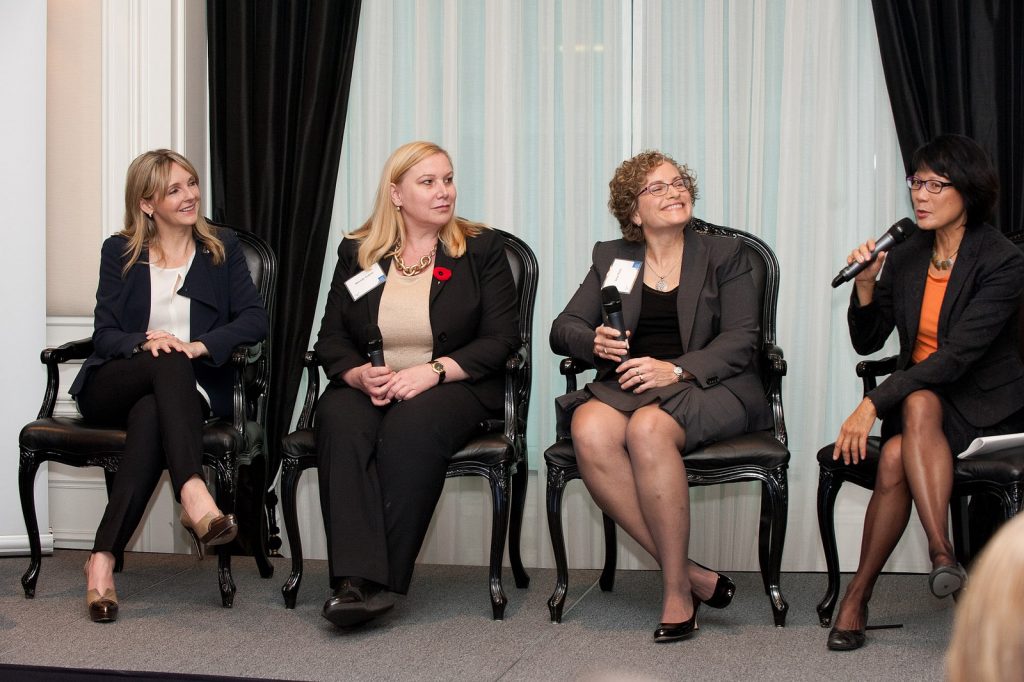
If you are asked to introduce the speaker or a panel for a meeting or event, you may not realize what an important role you have. The purpose of the introduction is to create a personal connection between the speaker and the listeners. You want people to feel privileged to hear the speaker and clearly understand the benefits of the upcoming presentation. Even if it’s a meeting of people who work together who “sort of” know the presenter, your job is to prime the pump and set the tone for the gathering right from the very beginning.
Starting off on the wrong foot can make it difficult for the speaker or even a panel of presenters to engage with listeners. Introductions that are too long, flowery, subjective or provide irrelevant details are a disservice to both the speaker and the audience.
To be successful, you as the “introducer” (or emcee) need to have guidance from the meeting’s organizers to focus you on the purpose and context of the occasion. This information clarifies any necessary ground rules and establishes your criteria for success. Here are some questions to discuss in advance:
- How much time will you have for the introduction(s)?
- What are the best things you can do to set the stage for the speaker or panel?
- What information would the audience appreciate or enjoy hearing about given the theme of the event and the group’s values and mission?
- Are there any issues, topics, or minefields that you should stay away from?
If you know the person you are introducing, be sure to keep in mind that this event isn’t about you or your friendship with the speaker. You might have been best friends since the first grade and have lots of funny anecdotes to share about her middle school crushes or blunders at summer camp, but avoid the temptation. Avoid looking unprofessional by using nicknames or private jokes that are more appropriate on Facebook or a less formal venue. You can always be personal when you mention a specific benefit of knowing the speaker, as in “The speaker coached our small company by building a more diverse cross-functional team and we doubled our profitability in one year.” Always tie your example back to what the audience would value about the speaker.
7 Best Practices for Preparing Your Speech
- Be brief. For a 15-minute presentation by the main speaker, your introduction should only be 1 minute.
- Remember your role. Warm up the audience and get them ready for the topic, the speaker or the panel’s expertise. This is not a time to flaunt your own expertise!
- Excite the audience. Share something interesting, shocking, or revelatory about the speaker tied to her expertise or accomplishments that will enhance her status.
- Establish a professional, businesslike tone. Avoid embarrassing the speaker by sharing something that is too personal or private that will distract listeners from the topic at hand.
- Avoid excess. Stick to facts relevant to the theme or purpose of the event. Avoid flowery introductions that appear overly fawning.
- Honor the presenter(s) wishes. Discuss any topics she or they would like you to emphasize (and avoid) in your remarks and honor her or their wishes.
- Don’t wing it! In the heat of the moment, you may feel impulsive and forget the script.
Put yourself in the speaker’s shoes for a moment to imagine how a disastrous introduction feels. In my case, I once delivered a keynote address to a mainly male audience of technology managers and engineers after they’d dined on a hearty dinner accompanied by an open bar. I realized early on that they would be skeptical about the speaker being a woman with a “soft” background. The person introducing me asked me to write out a draft of a few sentences he could use to introduce me. I had happily prepared and emailed out a brief introduction that highlighted my qualifications and my credentials for the occasion. In spite of his good intentions, the person introducing me decided to speak off the cuff, and with the gusto that comes from too much wine, said: “I’d like to introduce tonight’s speaker, Lois Phillips. You’ll love her! She’s great!”
I walked to the podium feeling undermined. I was counting on him to align me with his peers and give me his endorsement. If I hadn’t been well prepared and well-rehearsed, I don’t know if I could have rebounded.
This situation happened because I’d made an assumption that he’d print and bring the requested document with him (and use it) and I didn’t have a duplicate handy. From this situation, I learned that there’s only so much you can do to control the meeting dynamics, but you must try! Next time, I’ll be more assertive and have a heart-to-heart talk with the person introducing me about what they plan to say. Winging it in the spirit of the moment doesn’t honor the speaker and the time they’ve spent preparing.
After you’ve figured out what to say in your one or two minutes of airtime, the most enjoyable part is asking the audience to welcome the speaker. Why not end by saying something like this?
After you’ve done the honors, you can then return to your seat and sit back to relax and enjoy the presentation, knowing you have set her up for success. The rest is up to the speaker.
This is great and timely. I have been invited to moderate a panel this fall and I will use certainly utilize this article. Thanks!
Fran, a belated THANK YOU for reading my blog posts and being a professional friend …as well as a valued and trusted personal friend. I love to share what I know and am so happy when people find the ideas useful. warmest, as ever- LOIS